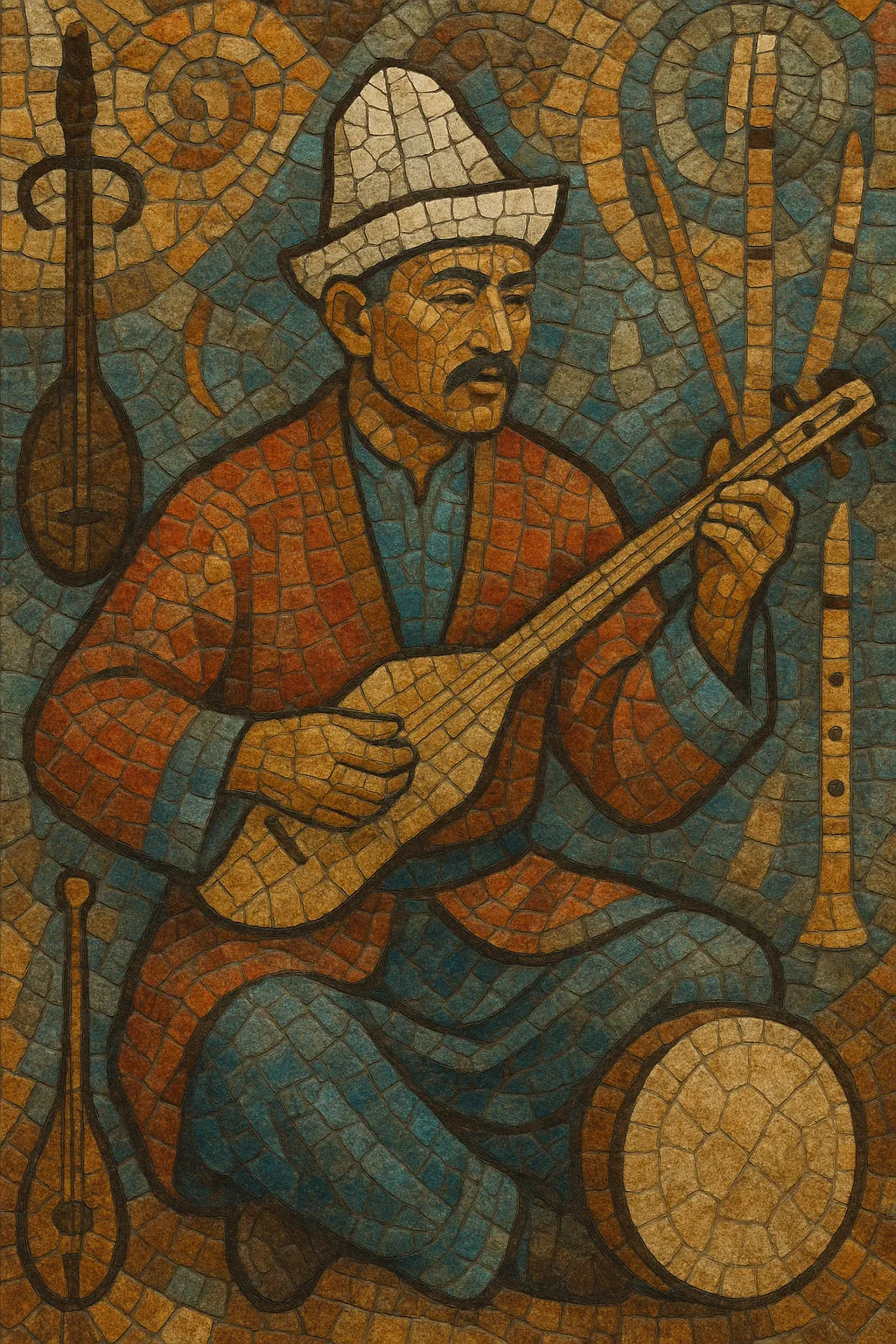
Kyrgyz traditional music is the oral, largely monophonic musical culture of the nomadic Kyrgyz people of the Tien Shan. It centers on epic recitation (most famously the Manas cycle) and instrumental pieces called küy performed on the komuz, a fretless three‑string lute.
Its sound world blends flexible, speech‑like vocal declamation with pentatonic and heptatonic modal melodies, drones, and heterophonic textures. Typical instruments include the komuz, temir komuz (jaw harp), kyl kyyak (two‑string spike fiddle), choor/sybyzgy (end‑blown flutes), and frame or hand percussion. Performances often feature dramatic timbral changes, ornaments, and rhythmic freedom, reflecting both pre‑Islamic shamanic strata and later Islamic poetic and musical aesthetics.
Kyrgyz traditional music coalesced in the medieval period among nomadic Turkic communities of the Tien Shan. The keystone is the epic tradition of the manaschi (epic chanter), who declaims episodes of the Manas cycle with highly flexible rhythm, timbral shifts, and formulaic melodic turns. This epic performance practice preserves pre‑Islamic layers (invocation, trance‑like delivery) while also absorbing Islamic poetic rhetoric over centuries.
Parallel to epic recitation, an instrumental repertoire of küy (programmatic pieces) grew around the komuz. Küy often depict horses, landscapes, or historical events through rhythmic motives, drone strings, and idiomatic strumming, plucking, and percussive techniques. Other emblematic instruments—temir komuz, kyl kyyak, choor—contribute solo and ensemble timbres, with heterophony preferred over chordal harmony.
In the late 19th and 20th centuries, akyn (improvising bards) and manaschi became culture bearers amid social change. During the Soviet period, folk repertoires were collected, notated, and arranged for professional ensembles (e.g., state folk groups), standardizing tunings and formats while keeping core idioms like the komuz küy and epic declamation alive on stage and radio.
After independence, there was a renewed emphasis on indigenous practice, master‑apprentice transmission, and historically informed performance. The "Epic culture, folk tales and music of the Kyrgyz epic Manas" was inscribed on UNESCO’s Representative List of the Intangible Cultural Heritage of Humanity, highlighting the vitality of manaschi art and its musical dimension.
Today, tradition bearers, conservatories, and folk ensembles sustain the lineage, while some artists integrate komuz, jaw harp, and kyl kyyak into world‑fusion and contemporary projects. Despite new contexts, the prevailing aesthetics—modal melody, drones, heterophony, and narrative expressivity—remain central.

